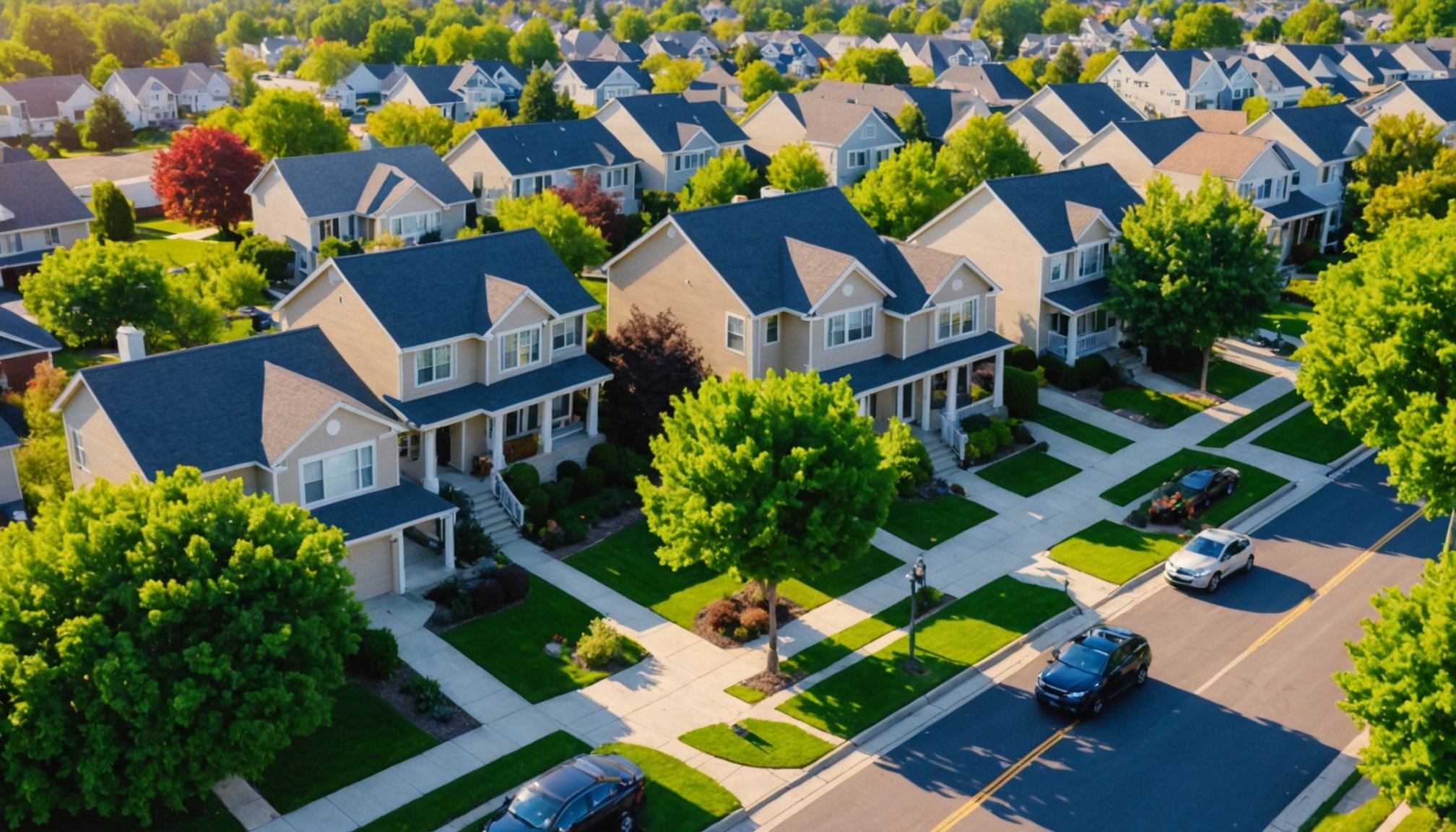The Telecommuting Revolution: Transforming Suburban Real Estate Dynamics and Market Insights
The rise of telecommuting, or remote work, has been one of the most significant shifts in the way we work over the past few years. This shift has not only changed how and where we work but has also had a profound impact on the real estate market, particularly in suburban areas. In this article, we will delve into the ways in which remote work is transforming suburban real estate dynamics and provide valuable market insights.
The Rise of Remote Work and Its Impact on Real Estate
Remote work has become the new norm for many professionals. The COVID-19 pandemic accelerated this trend, forcing companies to adopt remote work arrangements to ensure business continuity. According to various studies, this shift is here to stay, with many companies opting for hybrid work models that combine traditional office work with remote work.
Also to discover : Mastering the legal pathway: a comprehensive guide to converting agricultural land into residential property in the uk
How Remote Work Affects Suburban Areas
Suburban areas have seen a significant surge in demand due to the rise of remote work. Here are some key ways in which remote work is impacting these areas:
-
Increased Demand for Housing: With the flexibility to work from anywhere, many people are moving out of urban centers to suburban areas in search of larger homes, more affordable housing, and a better quality of life. This has led to an increase in housing prices and a more competitive market in suburban areas[1][2].
Also to see : Game-changing innovations enhancing security in high-rise residential buildings
-
Changing Work-Life Balance: Remote work has blurred the lines between work and personal life. People are now looking for homes that can accommodate both their work and personal needs. This includes homes with dedicated office spaces, good internet connectivity, and proximity to amenities like parks and community centers.
-
Shift in Property Values: The demand for homes in suburban areas has led to an increase in property values. Areas that were once considered far from city centers are now becoming more desirable due to their tranquility, larger spaces, and better quality of life.
The Evolution of Office Spaces
The traditional office space is undergoing a significant transformation. Here’s how remote work is changing the commercial real estate landscape:
The Decline of Traditional Office Spaces
-
Vacancy Rates: The rise of remote work has led to a decline in the demand for traditional office spaces. Many companies are reducing their office footprints, leading to higher vacancy rates in urban commercial properties. For example, in areas like La Défense in Paris, the vacancy rate for office spaces has increased from 5% before the COVID-19 crisis to 14.5% by the end of 2023[2].
-
Repurposing Office Spaces: To adapt to the new reality, many office spaces are being repurposed into residential units or mixed-use developments. This trend is particularly noticeable in cities where the demand for housing is high, and the supply of office spaces is abundant.
The Rise of Flexible Working Spaces
-
Co-Working Spaces: Co-working spaces have become increasingly popular as they offer flexibility and community to remote workers. These spaces provide amenities like high-speed internet, meeting rooms, and networking opportunities, making them attractive to freelancers and remote employees.
-
Home Offices: With more people working from home, there is a growing demand for homes with dedicated office spaces. Homebuyers are now prioritizing properties that can accommodate a home office, which has become a crucial feature in the housing market.
Market Insights and Trends
Here are some key market insights and trends that are shaping the suburban real estate landscape:
Key Trends in Suburban Real Estate
-
Increased Demand for Larger Homes: Remote workers often require more space to accommodate their work needs. This has led to an increased demand for larger homes with multiple bedrooms and dedicated office spaces.
-
Focus on Quality of Life: Suburban areas are attracting people who value a better quality of life. This includes proximity to parks, good schools, and community amenities.
-
Sustainability and Energy Efficiency: With the rise of remote work, there is a growing focus on sustainability and energy efficiency in homes. Homebuyers are looking for properties that are energy-efficient and environmentally friendly.
Regional Variations
The impact of remote work on real estate varies by region. Here are some regional insights:
| Region | Key Trends |
|---|---|
| New York | High demand for larger homes in suburban areas like Long Island and Westchester County. Increased focus on sustainability and energy efficiency[2]. |
| California | Growing demand for homes in suburban areas with good internet connectivity and dedicated office spaces. High property values due to limited supply[1]. |
| Europe | Significant increase in demand for homes in suburban areas, especially in countries like France where the housing market is highly competitive. Repurposing of office spaces into residential units is common[2]. |
Practical Advice for Homebuyers and Investors
If you are considering buying or investing in real estate in suburban areas, here are some practical tips:
For Homebuyers
- Assess Your Needs: Before buying a home, assess your work needs. Ensure the property has a dedicated office space and good internet connectivity.
- Location, Location, Location: Look for areas with good schools, community amenities, and proximity to parks.
- Energy Efficiency: Consider properties that are energy-efficient and environmentally friendly.
For Investors
- Diversify Your Portfolio: Invest in a mix of residential and commercial properties to mitigate risks.
- Focus on Quality: Invest in properties that offer good quality of life, including amenities like parks and community centers.
- Adapt to Trends: Be prepared to adapt your investment strategy to changing market trends, such as the repurposing of office spaces.
Quotes and Expert Insights
Here are some quotes and insights from experts in the field:
-
“The rise of remote work has fundamentally changed the way we think about real estate. Suburban areas are now more desirable than ever, and we see a significant shift in property values and demand,” says Stijn Van Nieuwerburgh, a real estate economist.
-
“Remote work has blurred the lines between work and personal life. Homebuyers are now looking for properties that can accommodate both their work and personal needs,” notes Christine Pelosse, a real estate expert.
The telecommuting revolution is transforming suburban real estate dynamics in profound ways. As remote work continues to grow, we can expect to see continued demand for housing in suburban areas, a shift in property values, and a transformation of traditional office spaces. Whether you are a homebuyer or an investor, understanding these trends and adapting to them will be crucial in navigating the changing real estate landscape.
Key Takeaways
- Remote Work is Here to Stay: The shift to remote work is not a temporary trend but a long-term change in how we work.
- Suburban Areas are in Demand: Suburban areas are becoming more desirable due to their larger homes, better quality of life, and affordability.
- Adaptation is Key: Both homebuyers and investors need to adapt to the changing market trends to make informed decisions.
As we move forward in this new era of work, it’s clear that the real estate market will continue to evolve, offering both challenges and opportunities for those involved. By staying informed and adaptable, we can navigate these changes and make the most of the telecommuting revolution.











